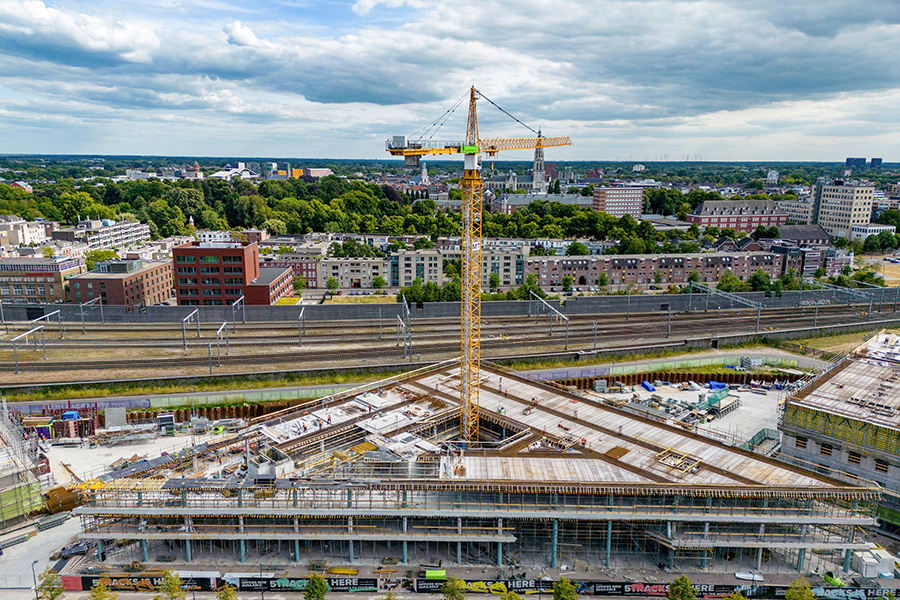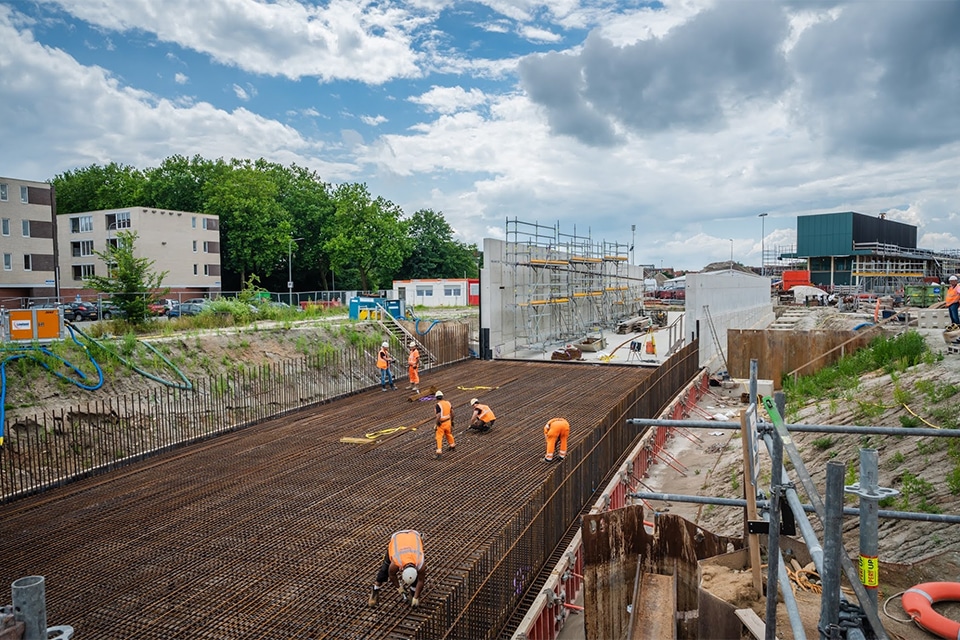
Toward a green concrete image
Concrete is strong, stable and wear-resistant. In addition, the material's thermal capacity, sound insulation and fire resistance are excellent. "It is not for nothing that concrete is frequently used in new construction and renovation projects," says Werner Hulstaert, Account Manager for the Netherlands at Decomo NV. "Yet the application is under fire. After all, concrete is said not to be sustainable and not environmentally friendly. We would like to counter this image, by encouraging better production and optimal (re)use of the initial raw materials."

Less cement in concrete
Producers are diligently looking for solutions to improve the composition of cement, Hulstaert notes. "Just by reducing the clinker percentage alone, CO2-emissions decrease significantly. Moreover, a conscious decision is made to add blast furnace slag, which is released during the production of steel and magnesium in blast furnaces. Furthermore, the addition of calcined clay as a substitute for cement seems promising."
The reduction of the cement content in concrete is possible through better (mechanical) concrete compaction, he says. "Among other things, high-frequency vibration motors help us achieve optimal strength development. Here they are supported by various admixtures." In recent years, the chemical industry has developed numerous admixtures that, despite the smaller cement content, still ensure an equivalent concrete quality. "In addition, various fillers (fillers) have been developed that can (partially) replace the cement. Of course without sacrificing the high fineness, which determines the hydration process and strength development."
Jeux Olympiques
A good example of a project in which "low carbon" cement was used is Jeux Olympiques in Paris. "For this project on the right bank of the Seine, we used 270 m3 acidified concrete delivered, in the form of 267 load-bearing columns and beams. Together, they form the sturdy, robust and aesthetic cladding of the plinth of six buildings that will house the Olympic athletes in 2024." In its specifications, the Paris city council set clear environmental performance requirements, Hulstaert says. "The choice of low carbon cement was decisive in the award. Once the Games are over, the buildings will be converted into permanent residential buildings. Building construction and façade finish will therefore be preserved sustainably."
Less concrete in buildings
A next step in sustainability is to also use less concrete in our buildings. For example, by using the volume of concrete more efficiently. According to Hulstaert, we can still learn a lot here from the steel industry. "Whereas concrete beams now still have a rectangular cross-section and are solidly filled with reinforcing steel and concrete, steel construction invariably works with H-profiles or I-profiles. The construction with a top flange, bottom flange and body can also make a big difference in the concrete industry. Until today, however, too little attention was paid to this. For example, because such an innovation involves development costs. Moreover, complex reinforcement must be braided. The small concrete volume saved was too uninteresting for many years. In today's light of sustainability and CO2-reduction, however, such savings suddenly do pay off. Making better use of concrete volumes is at least as interesting and relevant as reducing CO2-footprint for production. Instead of a solid beam, design a hollow beam or I-profile. And invest in prestressed reinforcement, instead of traditional mild steel reinforcement. By prestressing the strands, you need significantly less steel. Plus, you can control your deformations much more efficiently."
Modular and detachable construction
In addition to production and construction, Hulstaert says sustainability also relates to reuse, recycling and downcycling. "For example, we are actively looking at opportunities for modular and detachable construction, according to a fixed standard, so that concrete elements can be exchanged one-to-one in the future. In this way, we are working step by step toward a greener concrete image."
The address for architectural concrete
Decomo NV has been the address for architectural concrete for more than 50 years. In Moeskroen, more than 150 employees design, engineer and produce customized precast concrete elements. Elements that get their individuality from their concrete composition, combined with a wide range of shapes, colors and textures.



